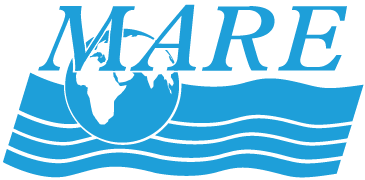Author: juliethierman
Guiding Question: How can we change the flow of carbon into the atmosphere?
These animations and simulations support understanding of the Ocean-Atmosphere Connection and Climate Change. They were developed for the Ocean Sciences Sequence curriculum for grades 6–8: The Ocean-Atmosphere Connection and Climate Change.
Guiding Question: How does human industry affect flows of Carbon in the Carbon Cycle?
Explaining the Model. This picture shows a carbon cycle. The objects (cow, tree, ocean, soil, etc) are carbon reservoirs [—a place where carbon is stored], the arrows represent carbon flows [—carbon moving from one reservoir to another]. This simulation allows the user to focus on different views of the carbon cycle (reservoirs only; natural flows; human […]
Guiding Question: Can climate change affect ocean currents?
Introduce North Atlantic Deep Water. Off the coast of Greenland in the North Atlantic, very cold, very salty water sinks down to the bottom of the ocean and slowly flows towards the Equator, this is called North Atlantic Deep Water, NADW. This sinking water is one of the major drivers of the Great Ocean Conveyor Belt. This […]
Guiding Question: What causes ocean currents?
Define the term current. A current is defined as water flowing in one direction across some time and distance. Review density of water in the ocean. When ocean water becomes warmer or colder or saltier the relative density of that water changes. These density differences cause the water to move. Explaining the models. Each of the 9 models involve a large […]
Guiding Question: Why are some liquids denser than others?
Explaining the model. This picture shows a large liquid filled tank in the center and a selection of liquid filled balloons to the right hand side and alternative liquid filled tanks to the left. In this simulation, different balloons can be placed into the tank of liquid in the center to see if and how the […]
Guiding Question: How does heat energy affect water and air?
*If you looked at the previous simulation activity, compare what you now know about water to air. Explaining the model. This investigation will use two tightly sealed bottles—one filled with water and one containing air. Both bottles are at room temperature. A lamp will provide heat energy to both bottles equally. Predict what will happen. What will […]
Guiding Question: How does heat energy affect water?
Explaining the model. This picture shows a room temperature bottle of water with a cork stuck in the top of the bottle and a glass tube pushed through the cork into the top of the water. Notice the water in the bottle reaches the bottom of the cork. The water line in the glass tube is […]
Development Process and MARE’s Role
MARE has contributed significantly to the community effort to develop the Ocean Literacy Framework. MARE staff led some of the early movements with the National COSEE Network and National Marine Educators Association that ignited the national campaign for Ocean Literacy. MARE took on a more prominent role in the Campaign as its staff coordinated the […]
Download the Ocean Literacy Framework
Ocean Literacy Principles Ocean Literacy: The Essential Principles of Ocean Sciences K-12 was published as a brochure. To acquire the print version: The Scope and Sequence The Ocean Literacy Scope and Sequence for Grades K-12 was published in 2010 in the NMEA Special Report on the Ocean Literacy Campaign. To acquire the print version: Key […]
Climate Simulation Activities
The following simulations come from the Ocean Sciences Sequence for Grades 6–8: The Ocean-Atmosphere Connection and Climate Change. Each simulation is part of a complete activity or series of activities on a particular topic within the curriculum sequence. However, the simulations are intended to stand alone, independent of the curriculum, as well. Below are suggested […]

